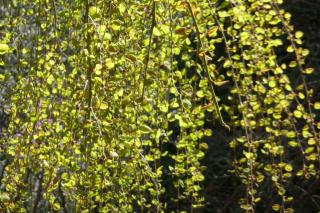

Cercidiphyllum is a smallish tree that comes from Japan. It definitely lends a distinctive Asian touch to any garden.
Core Cercidiphyllum facts
Name – Cercidiphyllum japonicum
and Cercidiphyllum magnificum
Common names – katsura, caramel tree
Family – Cercidiphyllaceae
Type – medium-sized tree
Height – 16-50 feet (5-15 m)
Exposure – full sun and part sun
Soil – rich is better
Foliage – deciduous
Flowering – none
Use – Japanese garden, bonsai
Simple guidelines for planting, care and pruning are only the beginning: discover the varieties and yummy tidbits that this species has in store for you!
Key takeaways for proper planting include exposure and soil.
Cercidiphyllum is happiest with a reasonable amount of light.
This is one of the easiest plants to satisfy.
It can take on both acidic and alkaline soil, wet & waterlogged soil, and even salty soil. Heavy clay soil isn’t a problem, either.
You may, if needed, reduce the size of the shrub or to balance growth in spring.
Cercidiphyllum is a plant that can be multiplied in various ways.
From most successful to least successful, here are the techniques that work best:
Find these methods described in this article: how to multiply cercidiphyllum.
Note that this is a dioecious plant. This means each tree is either male OR female, but not both. It isn’t self-fertile.
Actually, Cercidiphyllum is a small family (or genus, to be specific). Only two species are attached to it.
The more common one is Cercidiphyllym japonicum.
However, the rarer Cercidiphyllum magnificum is also quite a stunner.
All the Cercidiphyllum varieties that are more or less easy to find: Cercidiphyllum varieties
 Cercidiphyllum is native to Asia. It is considered a tree that grows quickly.
Cercidiphyllum is native to Asia. It is considered a tree that grows quickly.
During the rest of the year, it bears cute tender green leaves and just before leaf appearance, a very light blooming.
In winter, it stays attractive thanks to its bark. Furrows form as the tree ages in a up-and-down pattern that draws attention and is appealingly regular.
Mulch is always recommended to retain soil moisture in summer and protect from the cold in winter.